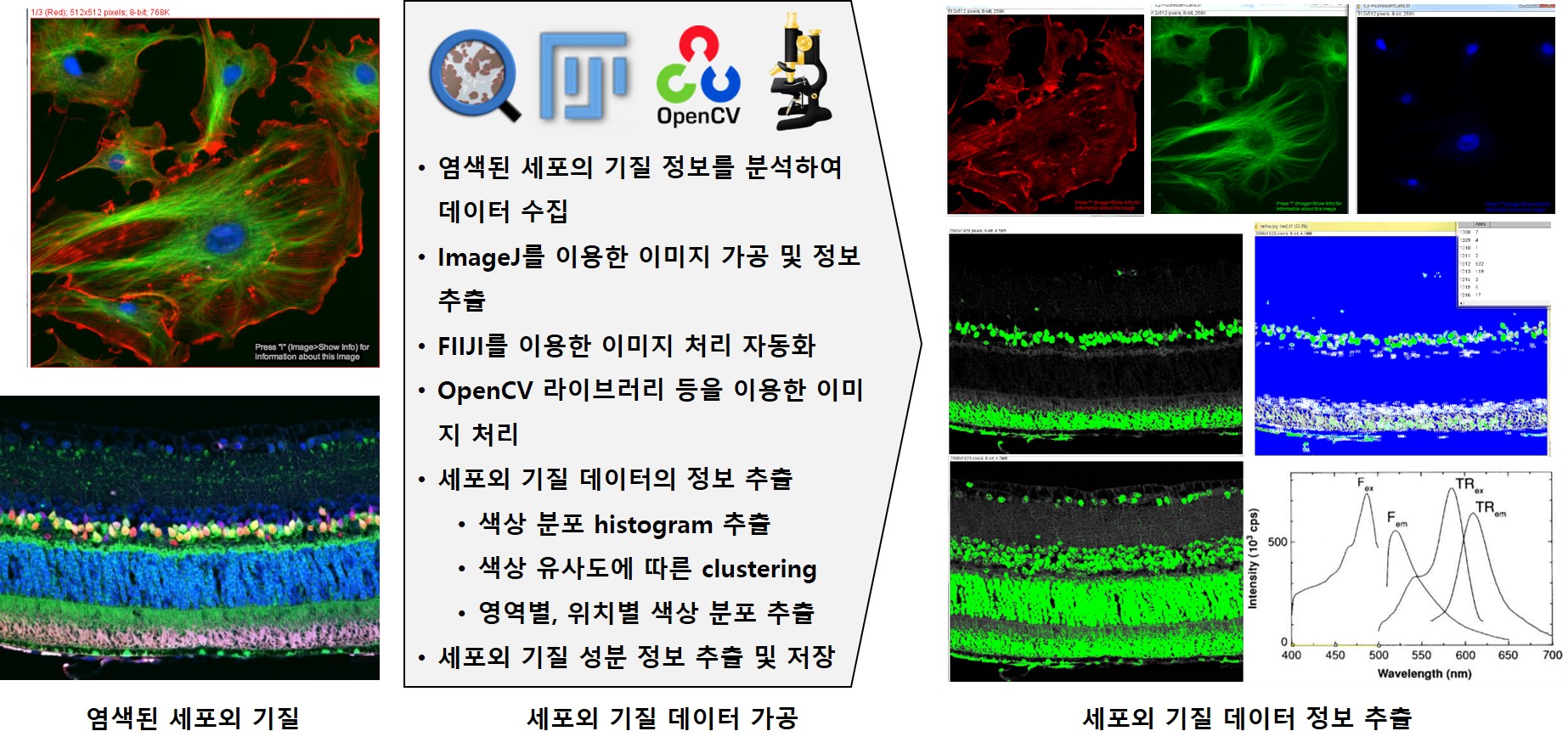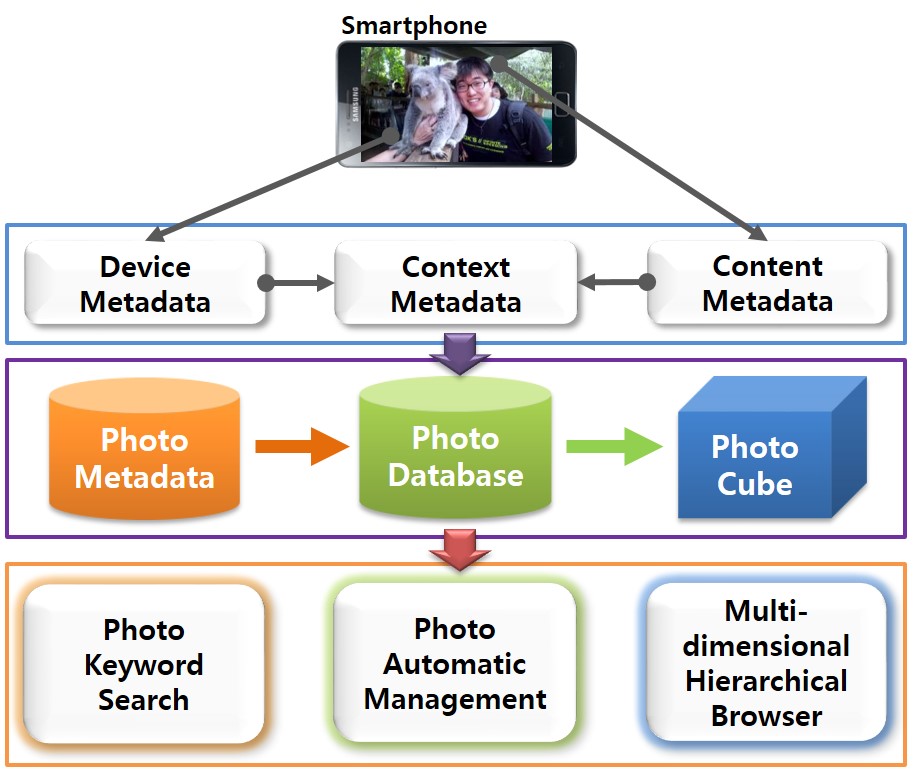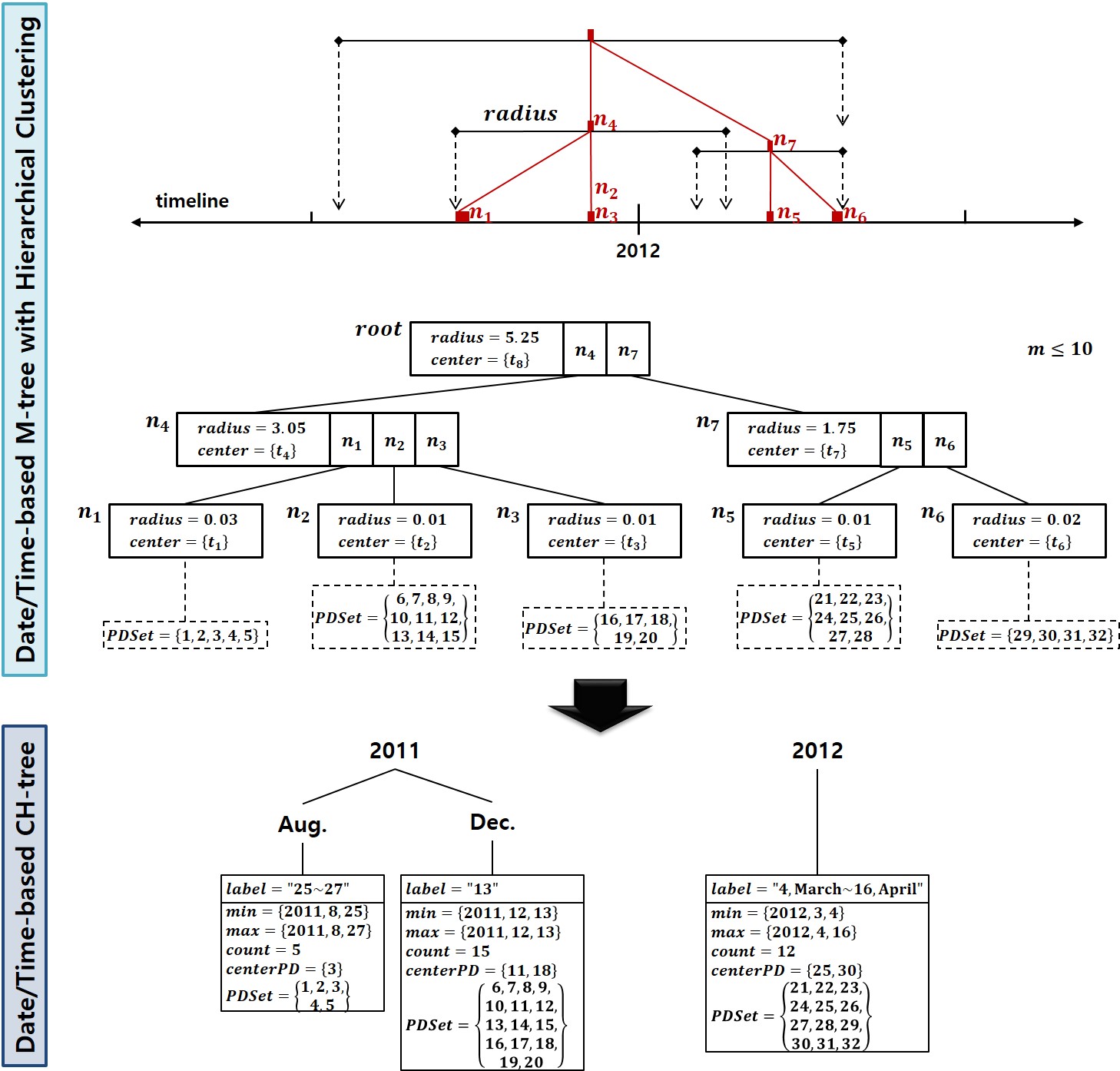COMPUTER VISION
Information

Computer Vision
Computer vision is an interdisciplinary scientific field that deals with how computers can gain high-level understanding from digital images or videos. From the perspective of engineering, it seeks to understand and automate tasks that the human visual system can do.
Computer vision tasks include methods for acquiring, processing, analyzing and understanding digital images, and extraction of high-dimensional data from the real world in order to produce numerical or symbolic information, e.g. in the forms of decisions. Understanding in this context means the transformation of visual images (the input of the retina) into descriptions of the world that make sense to thought processes and can elicit appropriate action. This image understanding can be seen as the disentangling of symbolic information from image data using models constructed with the aid of geometry, physics, statistics, and learning theory.
Publication
- Toshpulatov, Mukhiddin, Wookey Lee, and Suan Lee
- Image and Vision Computing
- February 2021
Abstract
Generative adversarial networks (GANs) have been extensively studied in recent years and have been used to address several problems in the fields of image generation and computer vision. Despite significant advancements in computer vision, applying GANs to real-world problems such as 3D face generation remains a challenge. Owing to the proliferation of fake images generated by GANs, it is important to analyze and build a taxonomy for providing an overall view of GANs. This, in turn, would facilitate many interesting applications, including virtual reality, augmented reality, computer games, teleconferencing, virtual try-on, special effects in movies, and 3D avatars. This paper reviews and discusses GANs and their application to 3D face generation. We aim to compare existing GANs methods in terms of their application to 3D face generation, investigate the related theoretical issues, and highlight the open research problems. Authors provided both qualitative and quantitative evaluations of the proposed approach. They claimed their results show the higher quality of the synthesized data compared to state-of-the-art ones.
Keywords
Generative adversarial networks; 3D face generation; Generator; Discriminator; Deep neural network; Deep learning
- 이정엽, 이수안, 이우기
- 한국컴퓨터종합학술대회, 한국정보과학회
- 2021년 07월
Abstract
인간의 편의성을 높이기 위해 다양한 방면에서 도움을 주는 인공지능 모델들이 생겨나고 있지만, 장애인을 위한 인공지능 모델은 부족하며, 불편함을 근본적으로 해소하는 모델이나 서비스는 없다. 이러한 이유로 장애인의 이동권은 제한되어 있으며, 주체적 이동이 불가능한 것이 현실이다. 본 논문에서는 이러한 장애인들의 이동권에 기여하고자, 안전한 보행에 위협이 되는 요소들을 객체 인식 모델로 식별하고 이미지 캡셔닝 모델로 주위 상황에 대한 설명을 음성으로 제공하는 안전 보행 모델을 제안한다. 그리고 추가적인 데이터 셋을 활용하여 본 논문에서 제안한 안전 보행 모델을 보완하고 강화할 수 있는 방법에 대해 설명한다. 이를 통해 장애인들의 주체적인 보행을 보장하여 궁극적으로 이동권을 향상시킬 수 있을 것으로 기대한다.
Keywords
- 장현수, 이수안
- 한국컴퓨터종합학술대회, 한국정보과학회
- 2021년 07월
Abstract
최근 실내에서 작동하는 모바일 자율주행 로봇의 중요성은 크게 증가하고 있다. 본 논문에서는 제한된 실내 환경 조건 아래에 저비용으로도 자율주행이 가능한 모바일 로봇을 위해 저비용 차선 인식 및 제어 알고리즘을 제안하도록 제시한다. 특히 관심 영역 자동 추출, 히스토그램을 이용한 RGB 임계값 자동 추출을 통해 영상 처리 과정에서의 정확도를 높이고 연산을 줄일 수 있다. 또한, 저비용의 차선 인식을 바탕으로 보조선을 이용한 조향각 제어를 통해 자율주행에 사용한다. 주행에 있어 차선이 하나만 인식되거나 영상 중앙에 차선이 인식될 때 가중치를 주어 안전하게 주행이 이루어지도록 하였다
Keywords
- 이효준, 이수안, 이우기
- 한국소프트웨어종합학술대회, 한국정보과학회
- 2020년 09월
Abstract
컴퓨팅 파워의 발전과 새로운 알고리즘들의 연구 결과들로 큰 규모의 딥러닝 모델들이 많이 등장했다. 위 모델들을 학습하기 위해서는 많은 양의 데이터는 필수적이다. 특히 컴퓨터 비전 (Computer vision) 분야의 경우 좋은 성능은 결국 학습 데이터의 수에 직결되는 추세를 보인다. 학습 데이터를 구축하기 위해서는 해당 데이터에 대한 레이블링이 필수적이나, 사람이 직접 레이블링을 일일이 하는 것은 많은 비용을 필요로 하기에 딥러닝 모델의 성능을 올리는 데 있어서 상당 부분 장애물이 되었다. 본 논문에서는 이러한 문제점을 해결하기 위해 기존의 InsightFace의 RetinaFace를 활용하여 레이블링이 되지 않은 대용량 데이터를 받아 영역 검출 후 자동 레이블링 방식을 제안한다.
Keywords
- 조시헌, 이수안, 이우기
- 한국컴퓨터종합학술대회, 한국정보과학회
- 2020년 07월
Abstract
스마트시티가 활성화되고 도시의 치안 문제와 개인시설의 보안 문제 등으로 방범용 CCTV, IP 카메라 등이 지속적으로 증가하고있다. 그로 인해 영상 데이터들이 계속 많아지고, 이와함께 개인정보 유출에 대한 위험성도 커지고 있다. 개인정보는 주민등록번호, 이름, 주소 등 문서나 의료 데이터에서만 유출되는 것이 아닌 영상, 이미지에서도 유출된다. 본 논문에서는 영상에서 검출되는 얼굴을 비식별화하기 위해서 얼굴을 GAN(Generative Adversarial Network)으로 생성한 얼굴과 바꾸는 모델을 제안한다. 이미지에서 개인정보로 쉽게 알아볼 수 있는 얼굴을 탐지 후 GAN을 통하여 생성한 임의의 얼굴을 해당 이미지 내의 얼굴로 대체한다. 비식별화된 이미지 데이터들은 다른 영상관련 딥러닝 훈련에 개인정보 유출 없이 사용 될 수 있다. 본 논문에서 제시한 비식별화 기술을 통하여 영상이나 이미지 내에 개인 정보의 유출을 막을 수 있다.
Keywords
- 이효준, 이철기, 이수안, 이우기
- 한국컴퓨터종합학술대회, 한국정보과학회
- 2020년 07월
Abstract
딥러닝 모델들은 높은 정확도로 인해 영상, 음성 및 자연어 처리 등 다양한 분야에 적용되며 산업에 활용 되고 있다. 이에 따라 딥러닝 모델에 대한 악의적인 공격에 관한 연구도 활발히 이루어지고 있다 .특히, 컴퓨터 비전 분야에서 영상 또는 이미지의 특성상 작은 노이즈에도 민감하게 반응할 수 있어 적대적 공격(Adversarial Attack)에 취약 하다. 만약 주민등록증이나 신용카드와 같은 개인정보를 포함하는 자료에 해당 공격이 가해진다면 다양한 인적, 물적 피해를 유발할 수 있기에 관련된 연구가 필요하다. 본 논문에서는 개인정보 자료들을 항한 적대적 공격의 유효성을 검증하기 위하여 개인 민감정보로서 쉽게 사용되어질 수 있는 차량 번호판에 적용하였다. 다양한 적대적 공격 방식을 대상으로 적대적 예제(Adversarial Example)들을 생성하였으며, 이를 통한 객체 탐지 모델의 오작동이 생길 수 있음을 검증하였다.
Keywords
- 박지형, 김진호, 이수안
- 한국소프트웨어종합학술대회, 한국정보과학회
- 2019년 12월
Abstract
최근 기술의 발전으로 지능형 CCTV같은 영상 수집 장치의 유용성이 대두되고 있다. 하지만 이러한 유용성에도 불구하고 개인 정보 침해 문제 때문에 영상 수집 장치의 설치나 보급에 어려움을 겪고 있다. 이러한 문제를 해결하기 위해 모자이크 등의 여러 기술이 존재하나 이러한 기술들은 필요시 복원이 불가능하거나 여러 문제점을 가지고 있다. 따라서 본 논문은 이러한 문제를 해결하기 위한 복원 가능한 영상 왜곡 모델을 제안하고, 이 구조의 특징인 왜곡 후 복윈 시 원본과 차이가 없다는 것과 시드를 통해 의도하지 않은 조작과 왜곡을 방지할 수 있는 것을 실험으로 증명하였다.
Keywords
- 장종원, 전호빈, 이수안, 김진호, 박홍성, 김미숙, 유수정, 지상훈
- 한국소프트웨어종합학술대회, 한국정보과학회
- 2019년 12월
Abstract
최근 빅데이터와 AI를 이용한 다양한 활용성이 주요한 이슈로 떠오르고 있다. 그중에는 수많은 영상을 데이터로써 입력하여 로봇이 영상 속 인간 작업자의 동작을 따라 하게 하는 연구 또한 존재한다. 본 논문에서는 인간 작업자의 작업과정에 대한 영상 데이터를 저장, 분류하고, 각 영상에 annotation을 추가하여 빅데이터 시스템에 저장한다. 빅데이터 시스템을 이용해 필요한 데이터를 질의하고 처리 분석하고, 판단지능을 위한 학습 데이터를 가져올 수 있다. 또한, 지속적인 판단지능 향상을 위해 학습된 모델의 결과도 빅데이터 시스템에 저장한다. 본 논문에서는 빅데이터 시스템의 설계와 저장구조 모델을 설명하며 활용성을 보인다.
Keywords
- 박범준, 조선화, 이수안, 신지운, 유혁상, 김진호
- 한국빅데이터학회지, 한국빅데이터학회
- 2019년 9월
Abstract
주변 세포의 구조적, 생화학적 지지체를 제공하는 세포 외 기질은 세포의 분열과 분화 등을 좌우하는 세포 생리 조절인자이다. 바이오 분야에서는 3차원 조직공학 지지체인 스캐폴드를 제작하고, 제작한 스캐폴드에 줄기세포를 배양해 동물에 이식해 조직 재생력을 평가한다. 이는 조직 내 콜라겐과 같은 구성성분에 좌우된다. 따라서 조직 내 구성성분의 포함율 및 분포를 파악하는 것이 매우 중요한데, 이에 관한 데이터를 염색된 조직 이미지의 색상을 분석함으로써 얻어낸다. 이때 이미지 수집부터 분석까지의 과정이 적지 않은 비용이 소모되고 있고, 수집되고 분석된 데이터를 연구 기관마다 상이한 포맷으로 관리하고 있다. 따라서 데이터 통합관리 및 분석결과 검색 등이 이루어지지 않고 있다. 본 논문에서는 관련 빅데이터를 통합적으로 관리할 수 있는 데이터베이스를 구축하고, 이 연구 분야에서 중요한 분석 척도인 색상을 기준으로 검색할 수 있는 바이오 이미지 통합 관리 및 검색 시스템을 제안한다. The extracellular matrix, which provides the structural and biochemical support of surrounding cells, is a cell physiological modulator that controls cell division and differentiation. In the bio sector, the company produces Scapold, a three-dimensional support for tissue engineering, and cultivates stem cells in the produced Scapold to be transplanted into animals to assess tissue regeneration. This depends on components such as collagen in the tissue. Therefore, it is very important to identify the inclusion rate and distribution of components in the tissue, and the data are obtained by analyzing the color of the dyed tissue image. The process from image collection to analysis is costly, and the data collected and analyzed are managed in different formats by different research institutions. Therefore, data integration management and analysis results search are not being performed. In this paper, we establish a database that can manage relevant bigdata in an integrated manner, and propose a bio-image integra ed management and retrieval system that can be searched based on color, an important analytical measure in this field of study.
Keywords
바이오 세포 이미지, 세포외 기질, 이미지 분석, 시각적 검색, Bio Cell Image, extracellular matrix, image analysis, visual retrieval
- 이수안, 이솔, 유혁상, 김진호
- 데이터베이스연구, 한국정보과학회 데이터베이스 소사이어티
- 2017년 12월 29일
Abstract
세포외 기질은 세포가 성장하고 분화하는데 필요한 생화학적 인자들과 세포를 위한 환경을 제공한다. 생체재료 분야에서는 세포외 기질의 구성 및 구조를 모방한 생체재료를 만들고, 세포를 배양하여 조직을 만들어 내는 실험이 지속되고 있다. 그러나 세포가 원하는 조직으로 잘 분화되는 3차원 지지체를 만들기 위해서는 세포외 기질에 대한 구성과 구조, 특성을 분석하고, 물리적 환경에 따른 조절 요인 등에 대한 연구가 필요하다. 본 논문에서는 형광 염색된 세포외 기질 이미지로부터 추출/가공을 통해 다양한 데이터를 저장하고 분석하는 바이오 빅데이터 시스템을 제안한다. The extracellular matrix provides the environment for cells and biochemical factors necessary for cell growth and differentiation. In the field of biomaterials, experiments have been continuing to make biomaterials that mimic the structure and structure of extracellular matrix, and use them to culture cells to produce tissues. However, it is necessary to analyze the constitution, structure, and characteristics of the extracellular matrix and to study the factors regulating the physical environment in order to produce a three-dimensional scaffold that differentiates cells into desired tissues, In this paper, we propose a bio-data system for storing and analyzing various data through extraction/processing from fluorescence-stained extracellular matrix images.
Keywords
Context awareness, Tensor data cube, MapReduce framework
- Suan Lee, Sunhwa Jo, Ji-Seop Won, Jinho Kim, and Yang-Sae Moon
- Applied Mathematics & Information Sciences
- 1 May 2015
Abstract
Recently new mobile devices such as cellular phones, smartphones, and digital cameras are popularly used to take photos. By virtue of these convenient instruments, we can take many photos easily, but we suffer from the difficulty of managing and searching photos due to their large volume. This paper develops a mobile application software, called Photo Cube, which automatically extracts various metadata for photos (e.g., date/time, address, place name, weather, personal event, etc.) by taking advantage of sensors and programming functions embedded in mobile smartphones like Android phones or iPhones. To avoid heavy network traffic and high processing overhead, it clusters photos into a set of clusters hierarchically by GPSs and it extracts the metadata for each centroid photo of clusters automatically. Then it constructs and stores the hierarchies of clusters based on the date/time, and address within the extracted metadata as well as the other metadata into photo database tables in the flash memory of smartphones. Furthermore, the system builds a multidimensional cube view for the photo database, which is popularly used in OLAP(On-Line Analytical Processing) applications and it facilitates the top-down browsing of photos over several dimensions such as date/time, address, etc. In addition to the hierarchical browsing, it provides users with keyword search function in order to find photos over every metadata of the photo database in a user-friendly manner. With these convenient features of the Photo Cube, therefore, users will be able to manage and search a large number of photos easily, without inputting any additional information but with clicking simply the shutter in a camera.
Keywords
photo metadata, photo annotation, clustered databases, multidimensional data cube, OLAP, hierarchical clustering, keyword search, multidimensional hierarchical browsing, mobile application, smartphones
- Suan Lee, Jinho Kim, Jiseop Won, Namsoo Kim, Johyeon Kang, and Sunhwa Jo
- Cloud and Green Computing (CGC), 2013 Third International Conference on. IEEE
- 30 Sept.-2 Oct. 2013
Abstract
Nowadays, it is popular for users to take photos through mobile devices like smartphones. In order to help users to search lots of photos within their smartphones easily, this paper develops a mobile application software system supporting a keyword search feature over photos just like searching web pages in the Internet. When a user takes a photo, the system extracts its meta-data of date/time and GPS as well as its various annotations automatically (e.g., mailing address, place names, event names, weather, etc.). Based on the annotations, we implemented a keyword search function over photos in smartphones. With this system, users can easily search photos with keyword conditions, even though they don't give any additional information.
Keywords
Keyword Search Over Databases, Mobile Application, Smartphone, Image Retrieval, Image Annotation, Keyword Search
- 최재용, 원지섭, 이수안, 김진호
- 정보과학회논문지, 한국정보과학회
- 2012년 09월 30일
Abstract
최근 스마트폰의 보급이 확산되고, 대중화됨에 따라 기존의 많은 모바일 기기들을 대체하고 있다. 많은 사용자들은 스마트폰을 이용한 사진 촬영을 취미뿐만 아니라 일상생활의 한 부분으로 많이 이용하고 있다. 하지만, PC에 비해 제한된 처리 능력과 디스플레이 크기를 가진 스마트폰에서 사진의 양이 증가함에 따라 단일 분류 기준으로는 관리 및 탐색에 어려움이 있다. 본 논문에서는 스마트폰에서 날짜/시간, GPS 정보를 추출한 뒤, 계층 모델을 생성하고, 계층 모델에 따라 사진 분류를 통해 효과적인 계층적 사진 탐색을 제공한다. 본 논문에서 제안한 시스템은 (1) 사용자 지정 가상 계층에 따른 사진 탐색, (2) 계층 트리 노드 병합을 이용한 사진 탐색, 그리고 (3) 균형 계층 트리를 이용한 사진 탐색 기법을 이용하여 사진 탐색의 편리함과 효율성을 극대화 하였으며, 구글 안드로이드 기반의 스마트폰에서 계층적 사진 탐색기를 설계 및 개발하였다. Recently smart phones are replacing a number of existing mobile devices while gaining wide popularity. Taking pictures with smart phones became a big part of our daily lives as well as hobbies. However, smart phones have limited processing capabilities and display size compared to a PC. Therefore, it is hard to manage and explore photos in a single category basis when the number of photos in a phone increase. This paper provides an effective hierarchical photo exploring system. As generating a hierarchical model by extracting date/time and GPS data from smartphones, this system offers us with an efficient way to explore photos. This photo exploring system features (1) using user customizable virtual hierarchy (2) using hierarchical tree nodes merge (3) maximizing efficiency and convenience by using balanced hierarchy tree. It was designed and developed using a Google Android smart phone.
Keywords
사진 메타데이터, 사진 관리, 사진 검색, 계층 모델, 스마트폰 Photo Metadata, Photo Management, Photo Search, Hierarchy Model, Smartphone
- 최재용, 이수안, 김진호
- 한국컴퓨터종합학술대회, 한국정보과학회
- 2012년 06월
Abstract
본 논문에서는 얼굴 인식 기술과 SNS 정보를 이용하여 사람의 얼굴을 기준으로 사진들을 효과적으로 분류하고 검색할 수 있는 시스템을 개발하였다. 얼굴 인식 기술을 이용하여 촬영된 사진의 분석을 통해 얼굴로부터 나이, 성별, 안경 착용 유무, 웃는 얼굴 판단 등의 의미적인 정보를 추출한다. 또한, 얼굴 인식을 통해 얻은 SNS 정보에서는 이름, 생일, 학력, 직업, 고향, 관심 분야, 종교 등의 개인적인 정보를 추출할 수 있다. 추출한 정보를 이용한 효과적인 사진 분류 및 검색을 통해 사용자의 편의를 극대화하였다. 본 논문에서는 구글 안드로이드 기반의 스마트폰에서 제안한 사진 자동 분류 및 검색 시스템을 구현하였다.
- Jinho Kim, Suan Lee, Ji-Seop Won, and Yang-Sae Moon
- Dependable, Autonomic and Secure Computing (DASC), 2011 IEEE Ninth International Conference on. IEEE
- 12-14 Dec. 2011
Abstract
Recently new mobile devices such as cellular phones, smart phones, and digital cameras are popularly used to take photos. By the virtue of these convenient instruments, we can take many photos easily, but we suffer from the difficulty of managing and searching photos due to their large volume. This paper develops a mobile application software, called Photo Cube, which automatically extracts various metadata for photos (e.g., date/time, place/address, weather, personal event, etc.) by taking advantage of sensors and networking functions embedded in mobile smart phones like Android phones or iPhones. The metadata can be used to manage and to search photos. Using this Photo Cube, users will be able to classify, store, manage, and search a large number of photos easily, without specifying any information but just clicking the shutter in a camera. The Photo Cube system was implemented on smart phones using Google's Android.
Keywords
multidimensional search, photo metadata, photo annotation, image databases, mobile application, smartphones, text search
- 이수안, 원지섭, 최재용, 김진호
- 가을 학술발표논문집, 한국정보과학회
- 2011년 11월
Abstract
본 논문에서는 모바일에서 수천, 수만장의 사진을 효과적으로 관리하기 위한 사진 탐색기에서 대해서 제안하였다. 대부분의 사람들은 개인적인 분류 기준에 따라서 사진을 분류 및 관리한다. 하지만 사진의 양이 많아짐에 따라 기존의 단일 분류 기준으로는 관리 및 탐색의 어려움이 있다. 본 논문에서는 촬영된 사진에서 날짜/시간, 주소를 자동으로 추출하고, 추출된 정보의 계층 구조에 따라 사진을 효과적으로 자동 분류한다. 또한, 계층 모델의 구조에 따라 사용자가 언제든지 변경가능한 가상 계층 디렉토리 기능을 제공하고, 동적 계층 탐색 기능을 제공하여 사용자가 쉽고 빠르게 사진을 탐색할 수 있다. 사용자는 사진만 촬영하면, 편리하게 사진을 계층 분류 및 관리할 수 있는 기능을 사용할 수 있다. 본 논문에서는 구글 안드로이드 기반의 스마트 폰에서 제안한 계층적 사진 탐색기를 구현하였다.





